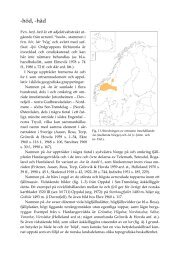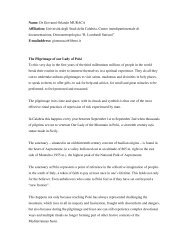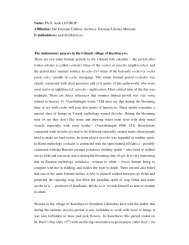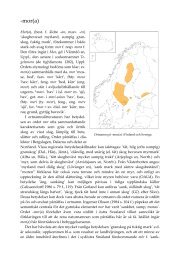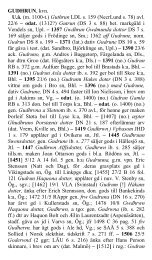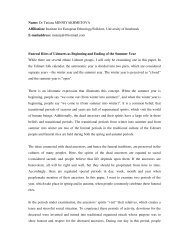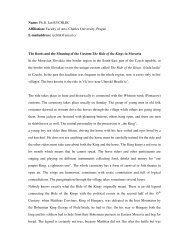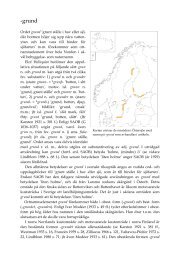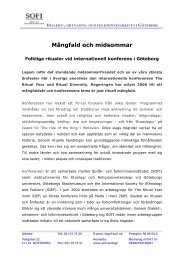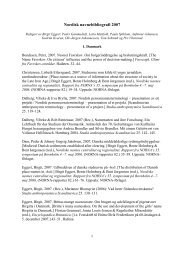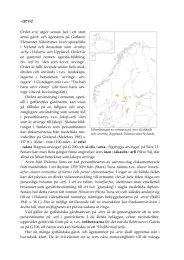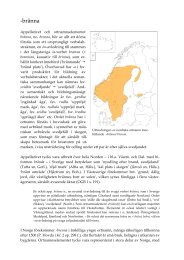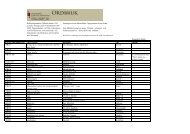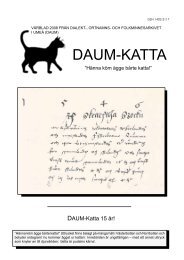NORNA-RAPPORTER 88 Binamn. Uppkomst, bildning, terminologi ...
NORNA-RAPPORTER 88 Binamn. Uppkomst, bildning, terminologi ...
NORNA-RAPPORTER 88 Binamn. Uppkomst, bildning, terminologi ...
You also want an ePaper? Increase the reach of your titles
YUMPU automatically turns print PDFs into web optimized ePapers that Google loves.
Nordiska personbinamnsordböcker och personbinamnssamlingar 105<br />
— 2008: 1400 Icelandic nicknames. I: Norræn nöfn – Nöfn á Norðurlöndum. Hefðir og<br />
endurnýjun. Nordiska namn – Namn i Norden. Tradition och förnyelse. Handlingar<br />
från Den fjortonde nordiska namnforskarkongressen i Borgarnes 11–14 augusti<br />
2007. Uppsala. (<strong>NORNA</strong>-rapporter 84.) S. 487–493.<br />
Summary<br />
Scandinavian byname dictionaries and byname collections<br />
– yesterday and tomorrow<br />
By Lennart Ryman<br />
This paper aims to give an overview of existing Scandinavian byname dictionaries and<br />
collections, and to start a discussion about how these could be used in the future, and<br />
how new collections could be built up. Some byname literature is also dealt with. It is<br />
underscored that scholarly interest has chiefly focused on prehistoric and medieval<br />
times. There are also collections of modern bynames, mainly accumulated through surveys.<br />
The bulk of existing collections and dictionaries were conceived a considerable time<br />
ago; the main ones for medieval times are a dictionary written by E. H. Lind (Lind Bin.),<br />
for western Scandinavia; the second part of the dictionary Danmarks gamle personnavne<br />
(DGP), for Denmark; and the collections for the dictionary Sveriges medeltida<br />
personnamn (SMPs), covering Sweden (including Finland). Notable exceptions are the<br />
more recent runic name dictionaries written by Lena Peterson (LUP, NRL).<br />
As for new collections, it is argued that they should be integrated with collections of<br />
first names and that they should be built up as relational databases, linked to sources,<br />
concordances etc. On the basis of such collections, it would be desirable to print dictionaries<br />
in a more traditional form. In practice, the most realistic course is probably to start<br />
by digitising existing collections and dictionaries.



